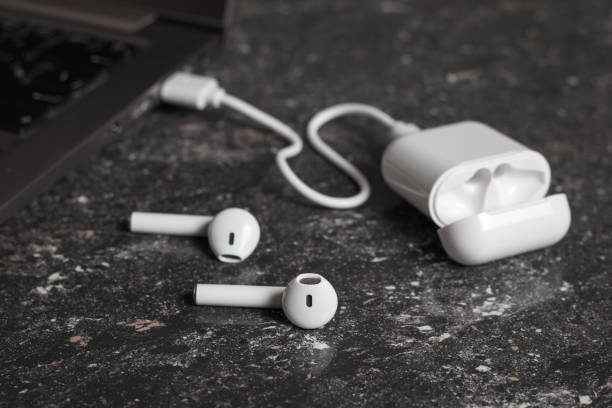Audio technology has dominated the innovation race over the last few years, giving audiophiles thrilling and immersive listening experiences. The improvement in Bluetooth earphone audio quality is one of the most important developments in this field.
This article will explore the journey of Bluetooth earphone audio quality, touching on significant milestones and discussing how they have shaped the crystal-clear sound we enjoy today.
The Birth of Bluetooth and Early Challenges
When Bluetooth was first developed in 1998, mobile phones, PCs, and, eventually, audio equipment swiftly adopted it as the preferred wireless communication protocol. However, Bluetooth audio’s early versions were far from ideal.
Early adopters had to contend with poor sound quality, limited range, and unstable connections. The audio was often plagued by latency issues, which resulted in noticeable delays between the source and the earphones.
Breakthroughs in Bluetooth Audio Protocols
The Advanced Audio Distribution Profile (A2DP) launch in 2003 was one of the biggest developments. This protocol enabled streaming high-quality stereo audio over Bluetooth, a game-changer for wireless earphones.
The introduction of aptX in 2009 further revolutionized Bluetooth audio quality. The aptX family of codecs, created by Qualcomm, compresses and decompresses audio files to allow for wireless transmission without noticeably lowering their quality.
This codec made it possible to achieve near CD-quality sound over Bluetooth, setting a new standard for wireless audio.
The Impact of True Wireless Stereo (TWS) Technology
The next major leap in Bluetooth earphone audio quality came with the emergence of True Wireless Stereo (TWS) technology. Due to their comfort and mobility, TWS earphones—which are made up of two distinct earbuds that work independently without any kind of physical connection—have grown in popularity.
TWS earphones were made possible by the development of new Bluetooth chipsets, such as the Qualcomm QCC3020 and the Apple W1 chip, which improved connection stability, reduced latency, and enhanced overall audio quality.
Furthermore, the inclusion of active noise cancellation (ANC) technology in many TWS earphones has allowed for an even more immersive listening experience by blocking out external noises.
Adaptive Audio and the Future of Bluetooth Earphones
As Bluetooth earphone technology continues to advance, we are seeing the development of adaptive audio features that adjust the sound based on factors such as user preferences, environmental noise levels, and even biometric data. For instance, some earphones now include built-in heart rate monitors, which can adjust the music tempo to match the user’s workout intensity.
Another promising development in Bluetooth audio quality is the Low Complexity Communication Codec (LC3). Part of the Bluetooth 5.2 standard, LC3 promises to deliver even higher quality audio with lower power consumption. This codec has the potential to improve the listening experience further while extending battery life, making Bluetooth earphones an even more attractive option for users.
The Synergy of Design and Technology
Another aspect that has played a crucial role in the evolution of Bluetooth earphone audio quality is the synergy between design and technology. As the demand for more compact, stylish, and ergonomic earphones has grown, manufacturers have had to balance aesthetics with performance.
Innovative designs like in-ear monitors (IEMs) with multiple drivers allow for wider frequency response and better sound reproduction. Furthermore, the development of new materials, like graphene diaphragms, has enabled more accurate and responsive audio reproduction. These design enhancements and the latest Bluetooth technologies have contributed to the remarkable audio quality we enjoy today.
The Rise of Personalization and Customization
The growing trend of personalization and customization may also influence the future of Bluetooth earphone audio quality. With more consumers seeking unique and tailored listening experiences, we can expect to see an increase in customizable sound profiles, allowing users to fine-tune their earphones’ audio output to match their preferences.
Some manufacturers have already begun to offer customizable ear tips and modular designs, which allow users to modify their earphones’ sound signature by swapping out various components. This level of personalization enhances the listening experience and fosters a greater sense of ownership and satisfaction among users.
Conclusion
The evolution of Bluetooth earphone audio quality has been a remarkable journey, marked by significant advancements in wireless communication, audio protocols, and chipset technology. Today, we enjoy the crystal-clear sound, stable connections, and unparalleled convenience thanks to these innovations.
As adaptive audio and new codecs like LC3 become more widespread, we can expect even more impressive audio quality and functionality from our Bluetooth earphones. There has never been a better moment to buy Bluetooth headphones, regardless of whether you love hands-free listening, are a fitness enthusiast, or enjoy listening to music.
In addition to the technological advancements discussed above, we should also recognize the role of user feedback and market competition in driving the evolution of Bluetooth earphone audio quality.
Product innovation has increased as a result of manufacturers paying attention to consumer needs for higher sound quality, longer battery life, and more comfortable designs.
Additionally, as more businesses enter the market, competition has pushed manufacturers to continually enhance their products, providing better features and performance at more aggressive costs.
As a result, consumers now have a wide variety of options to suit their demands and financial capabilities.
In conclusion, the evolution of Bluetooth earphone audio quality has come a long way since its inception, transforming wireless audio from a mere convenience to an immersive and personalized listening experience. As technology continues to advance and user demands evolve, we can look forward to a future of even more refined, crystal-clear sound from our Bluetooth earphones.


